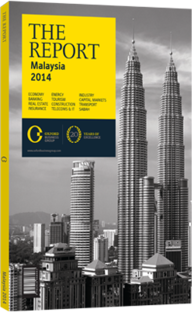OBG talks to Kellee Kam, Group Managing Director, RHB Capital

Interview: Kellee Kam
How does loose monetary policy help expand credit and what risks are there for bank loan portfolios?
KELLEE KAM: The low interest rate environment has helped credit expansion, especially lending to the household segment. As a result, household indebtedness rose to 86.8% of GDP by December 2013 from 66.7% in 2004. This has led to concerns regarding the potential for deterioration in the banks’ asset quality. The high household debt is, however, cushioned by high savings and is largely asset-based (housing loans make up about 45% of total household debt), reducing systemic risk to the banking system and the economy.
Malaysia’s central bank has introduced macro-prudential measures in recent years to rein in excessive lending activities, and the gross impaired loans ratio for the household sector stood at 1.3% at end-2013, providing another cushion to the situation. The rising cost of living and falling housing affordability may still, however, be a concern for the middle- to lower-income groups, despite government efforts to contain the rise in household debt and tame property prices.
How are Malaysia’s banks preparing for greater regional integration under ASEAN?
KAM: The Malaysian Financial Sector Blueprint 2011-20 accords greater flexibility for locally incorporated foreign banking institutions to establish physical branches, and promotes foreign participation by issuing new licences to financial institutions. Despite the potentially higher competition, local banks have managed to build capacity over the past decade and are in a better position to face competition and greater liberalisation.
As for regionalisation efforts, Singaporean and Malaysian banks are ahead of their ASEAN peers with several of their banking groups having already established a regional presence. Commitments from these banks to ASEAN will not only help mutually reinforce regional growth, but will also become an important source of stability. Some banking groups remain domestically focused, and there are still growth opportunities for these banks. They are now in a better position to face new competition and challenges.
In what ways will new foreign regulations affect Malaysian financial institutions?
KAM: One of the significant impacts of the US DoddFrank Act (DFA) is the regulation of the over-the-counter (OTC) derivatives markets, which historically has been an unregulated area. Some of the changes include the requirement for clearing of standardised OTCs through central counterparties and placing of higher capital and margin requirements on non-centrally cleared derivatives, with a view to reducing systemic risk from OTC derivatives. DFA also introduces new categories of market participants like swap dealers, major swap participants (MSP), financial end-users and non-financial end-users. Although the new requirements focus largely on swap dealers and MSPs, institutions that enter into OTC trades to hedge their risk will be subject to a wide range of requirements.
Arising from these changes, any entity that transacts in OTC derivatives, including any Malaysian financial institution, will be required to adapt to the evolving OTC market. Such changes may affect an institution’s hedging strategy as well as its derivative policies. Malaysian financial institutions would therefore need to assess and correspondingly implement such measures if they wish to continue to trade OTC with entities governed by the DFA regulations.
The objective of the Foreign Account Tax Compliance Act (FATCA) is to achieve full transparency over investments by US nationals outside the US, so as to curb tax evasions by US taxpayers holding offshore accounts. Under FATCA, Malaysian financial institutions are required to enhance and improve their information technology systems and operational processes in order to ensure they comply with the requirements. There is a one-time compliance cost and subsequent monitoring cost involved for financial institutions that deal with American clients or those with a US income source.
You have reached the limit of premium articles you can view for free.
Choose from the options below to purchase print or digital editions of our Reports. You can also purchase a website subscription giving you unlimited access to all of our Reports online for 12 months.
If you have already purchased this Report or have a website subscription, please login to continue.

